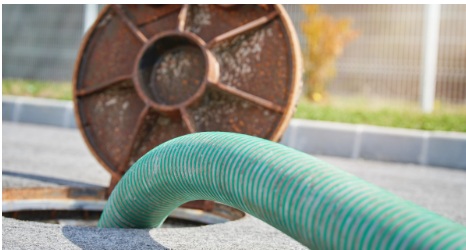Sewerage cleaning has been around for as long as there have been sewers. But how were they cleaned, and how are they cleaned today?
A Brief History of Plumbing and Sewers
The oldest sewerage system goes back over 4000 years, with civilisations in the Indus Valley building red-brick lined sewage systems held together with a gypsum-based mortar. These were primarily used for baths both public and private, with public drains underneath the streets. The first indoor plumbing system in the world, on the other hand, came much later. Found in Crete and belongs to the ancient bronze age civilisation known as the Minoans. It not only survived all of history, but it’s still in working condition for 3,000 years. Later the ancient Greeks and the Mayans invented their own systems, but it was not until the Romans invented the Cloaca Maxima and began developing complex underground sewer networks that these systems began to spread across the world.
Although the pipes for water supply could be quite thin and small, in the past, sewers and sewerage pipes had to be built so that they could be easily opened up alongside the road, or large enough for an adult to fit inside them. This was because the only way to effectively clean them was to physically get inside them and apply either light acids and bases, or to apply good old-fashioned elbow grease.
Sanitation workers were often well paid, but then again, if you have to spend every day sticking your hands into sewerage to clean up clogs and waste buildup, you’d hope it would be! However, the days of getting elbow-deep are largely behind us. Today we have developed new and more effective ways to clean our sewers, both at home and in the streets beyond.
Modern Cleaning Techniques
Today the main approach to cleaning is still to pour an acidic cleaning agent into the sewer line. If you’ve ever found a clog in your own home, chances are the first step you’ve taken has been to pour one of these acidic cleaning agents down the sink. Although these days acid isn’t the only substance we use. Many of our kitchen sinks get filled with oil and fat, and these are best removed using cleaning agents with a high base.
However, for most cleaning jobs this is only the first step. The second most common method of cleaning – both domestic and in industrial contexts – is hydro jet cleaning using a specialised power washer. There are a few models of this. Most people are familiar with the hand-held powerwasher typically used for cleaning roads and driveways, all the way up to the extremely powerful hydro-jets, but for most small pipes and domestic contexts, a different model is used.
This type of power washer has a long, flexible pipe with a specialised nozzle at the end. This nozzle fires highly pressurised water both forwards -and- backwards in order to both dislodge and remove clogs and other blockages.
However, when these methods don’t work, it usually means that someone needs to get into the pipe to either replace it or remove the blockage manually. In a domestic context, this often means locating the approximate placement of the block, and then unscrewing or digging up the pipe in order to fix it. While this may seem like a return to the old methods it’s actually much simpler. Most pipes are built in serial instalments, with each piece able to be removed and replaced with relative ease.
Although it does require specialised equipment, a professional plumber can easily deal with a blockage by simply removing the affected piece of pipe and replacing it with a new one. It is only in large industrial pipes, city centres and the like, where people still need to go into the sewers personally in order to clean them and perform physical repairs. Fortunately, these systems are typically built to last for decades if not centuries, and these large pipes are given protective coatings in order to help them last longer.
How Often Are Sewer Pipes Cleaned?
How often these large industrial pipes need to be cleaned is a lot like asking how often you need to clean your pipes – it depends greatly on how you use them. But a good rule of thumb is that most plastic pipes should be replaced at least once every 50 years, with metal pipes lasting longer or shorter depending on the quality of your water.
So there we have it! A short history of sewers and indoor plumbing and a little more on how they are cleaned and maintained to this day. We hope you’ve learned a little something, or maybe inspired you to learn a little more. Either way, have a lovely, sewer-free day.



